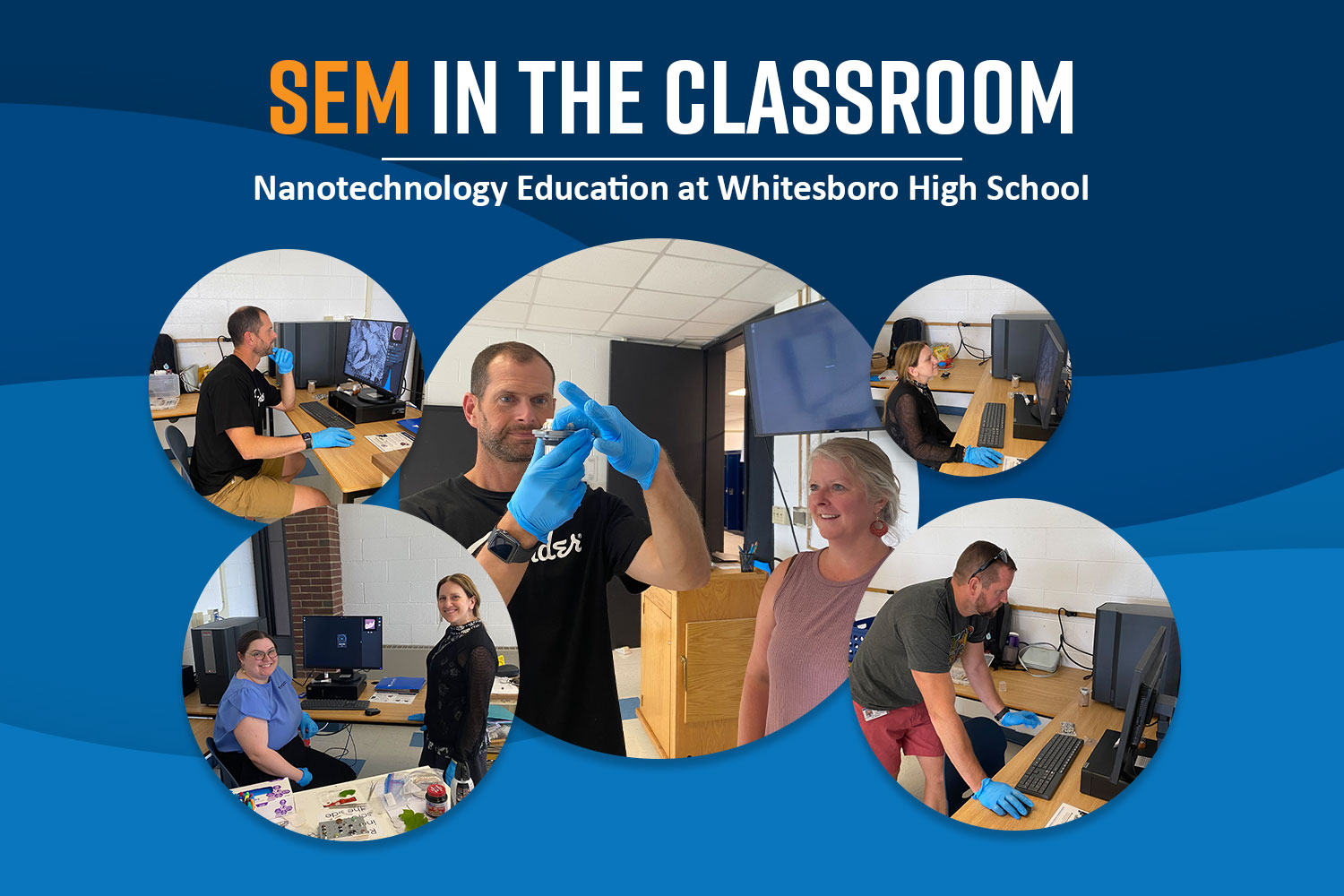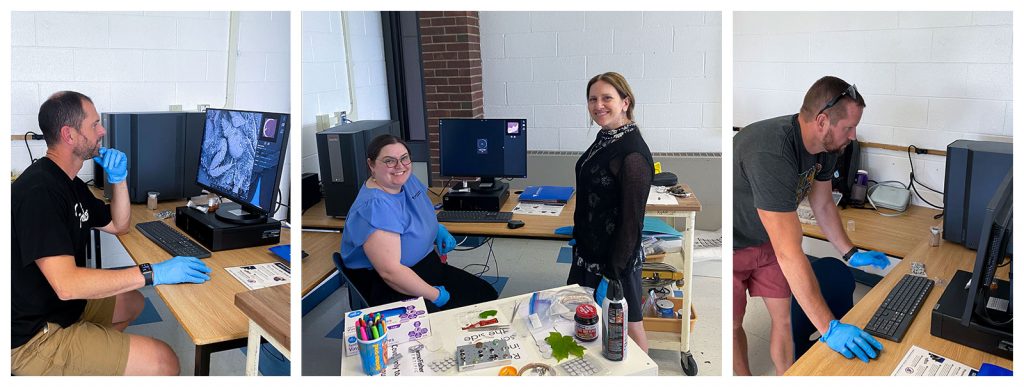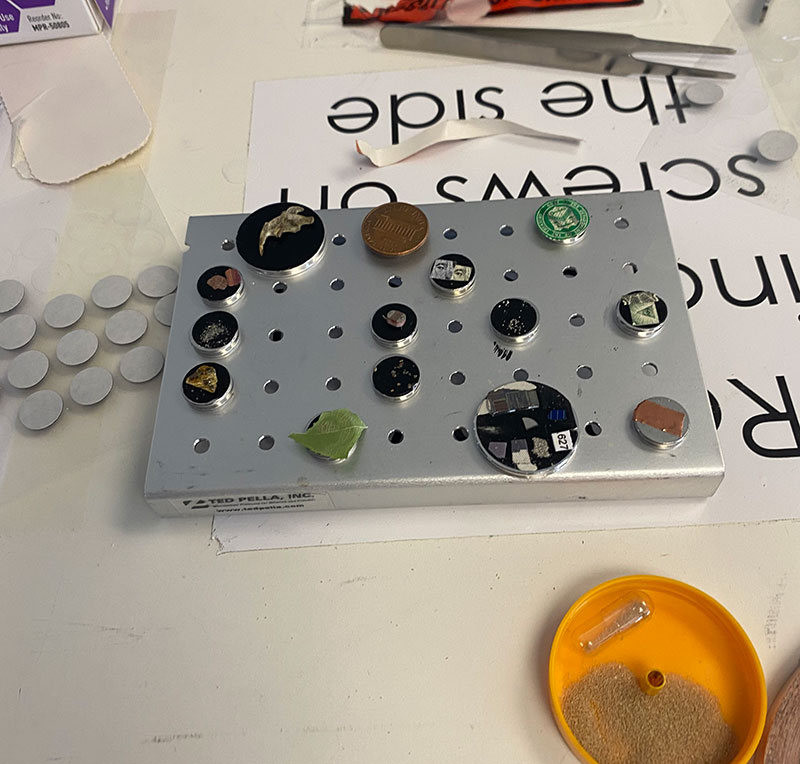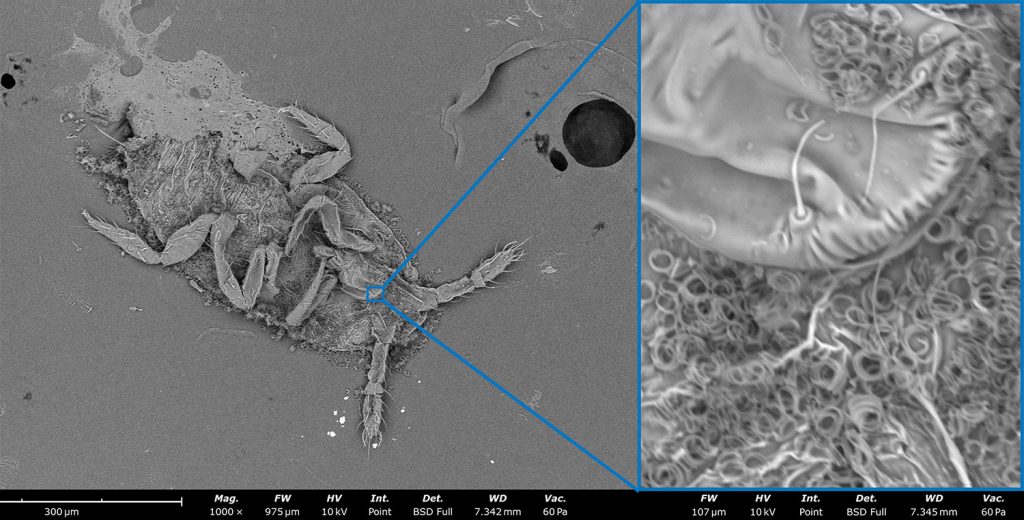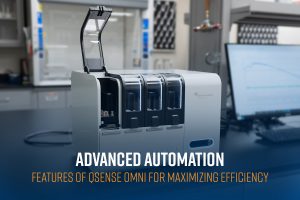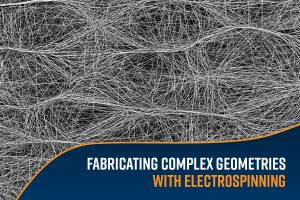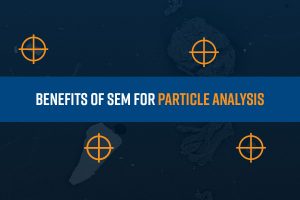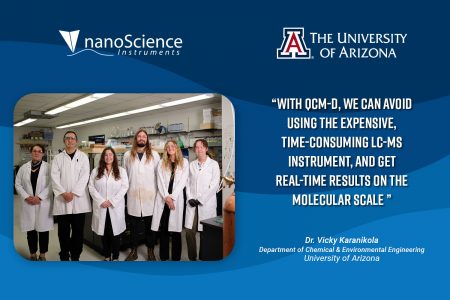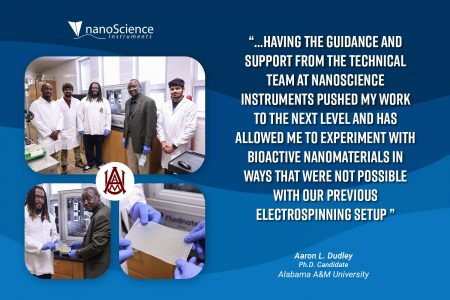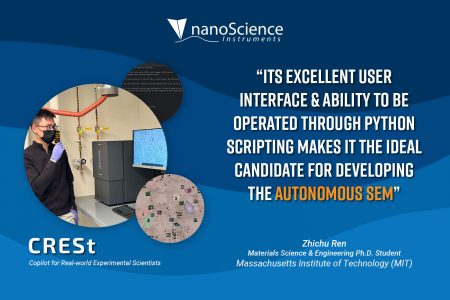Introduction
Imagine being able to visually explore the nanoscale structures of bugs, pollen, cells, minerals, and more. To zoom thousands of times closer than the naked eye and study intricate details spanning just billionths of a meter. A scanning electron microscope (SEM) is a versatile tool which makes use of an electron beam to scan the surface of a sample to make this vision an achievable reality. Making sense of such small scales requires grasping dimensions exponentially smaller than our direct experience, and an SEM provides a powerful lens to explore these landscapes.
High school marks an ideal time to embark on an expedition into the fundamental building blocks of nature. It is a period of rapid development when students build the foundations of analytical thinking and scientific acumen, when active learning driven by investigation can ignite curiosity. Hands-on nanotechnology education enabled by tools like SEM uniquely encourages curiosity in high school students by making it possible to visualize abstract principles through real-world experiments.
Whitesboro High School of Marcy, New York has recently actualized this goal by acquiring a state-of-the-art Phenom Desktop SEM. This imaging instrument provides students an unprecedented opportunity to visualize micro and nanoscale structures first-hand and explore the scientific concepts discussed in the classroom on a much deeper level. Under the guidance of their teachers, they will prepare samples, operate the SEM, and interpret image results. Interacting directly with their Phenom SEM merges theoretical concepts with real experience, forging an intuitive comprehension of the nanoworld.
Beyond visualization, evaluating the results derived from images they acquire will hone their analytical skills while troubleshooting challenges will exercise critical thinking essential to the scientific process. Students with an interest in science and engineering will gain invaluable hands-on experience with such sophisticated equipment and build technical facilities and conceptual knowledge key to future studies.

How it Began
The SEM initiative was spearheaded by Whitesboro’s recently retired Science Department Chairman, Dwight “Buzz” Putnam. After years nurturing curiosity in budding young minds, Buzz conceived of incorporating nanotechnology education into the school’s curriculum. He wrote a grant proposal detailing how hands-on SEM exploration could uniquely convey principles of biology, physics, earth science, and chemistry at their most foundational levels to students. The SEM would empower them to think like scientists, asking how and why micro and nanostructures impart functions on the bigger whole. With the grant approved, Buzz’s vision was set in motion before he passed the Science Department Chair mantle to Sean Ryan, who also has the role of AP Biology and Science AIS Teacher at Whitesboro. Sean now guides Buzz’s mission forward, believing the instrument will ground theoretical concepts in tangible observation.
Using a Phenom Desktop SEM at High School
During their training on their Phenom Desktop SEM, Sean and fellow Whitesboro faculty explored specimens like flowers, leaves, mites, and pollen. The teachers were pleasantly surprised at the microscope’s wide range of capabilities and ease of use as they viewed new microstructures with each sample. Guided by Nanoscience Instruments SEM Applications Scientist, Ingrid Koch, the group received helpful techniques to achieve optimal images and were able to discover more than they originally thought possible with their instrument. Sean remembers the training session, stating:
“The department was broken up into groups based on discipline area and were able to prepare various samples, image them using scanning electron microscopy, and learned how to capture images. Though teachers could view premade specimens, they chose to prepare items of their own interest.
Ingrid Koch was the perfect instructor. She was incredibly knowledgeable in various science disciplines and was passionate about the instrument and the possible uses in the high school classroom.”
– Sean Ryan, Whitesboro High School
Sean also recalls leaping out of the (first floor) window to collect a flower for imaging. Among the pollen grains within the flower, the group happened upon a peculiar looking mite, which they took interest in and examined more closely. Zooming further revealed intricate spirals, curl-like structures originating from the mite. Were they parasites? Nematodes? The mystery remains open. He explained how this experience exemplified the spirit of open-ended discovery innate to science – how one experiment leads to new questions and mysteries to be uncovered, layer by layer. Within the classroom, their Phenom SEM will hand students the reins to conduct explorations together into the unseen.
After and even during the training session, Whitesboro’s science teachers began collaborating to devise ways to integrate the Phenom Desktop SEM into diverse lessons across disciplines. While some plan to demonstrate preparing samples for imaging, others intend on providing full hands-on learning. Each teacher bears the responsibility of carefully constructing engaging lesson plans that maximize the Phenom’s benefit for their students – and student participation.
Biology students may glimpse xylem coiled like a telephone cord, or stare into the charming face of an ant. In earth science, students may witness commonplace dirt transform into a meteorite field of minerals and crystals, and physics students can observe the organized structures of microchips that guide the flow of electrons in a circuit. But beyond specific lessons, experiencing electron microscopy helps students gain perspective on the infinitesimal scales that determine how both the natural and engineered sides of our world function on a fundamental level. These interactions make concepts once only theoretical feel accessible and real; and just as importantly, it stokes the imagination necessary to conceptualize fresh frontiers.
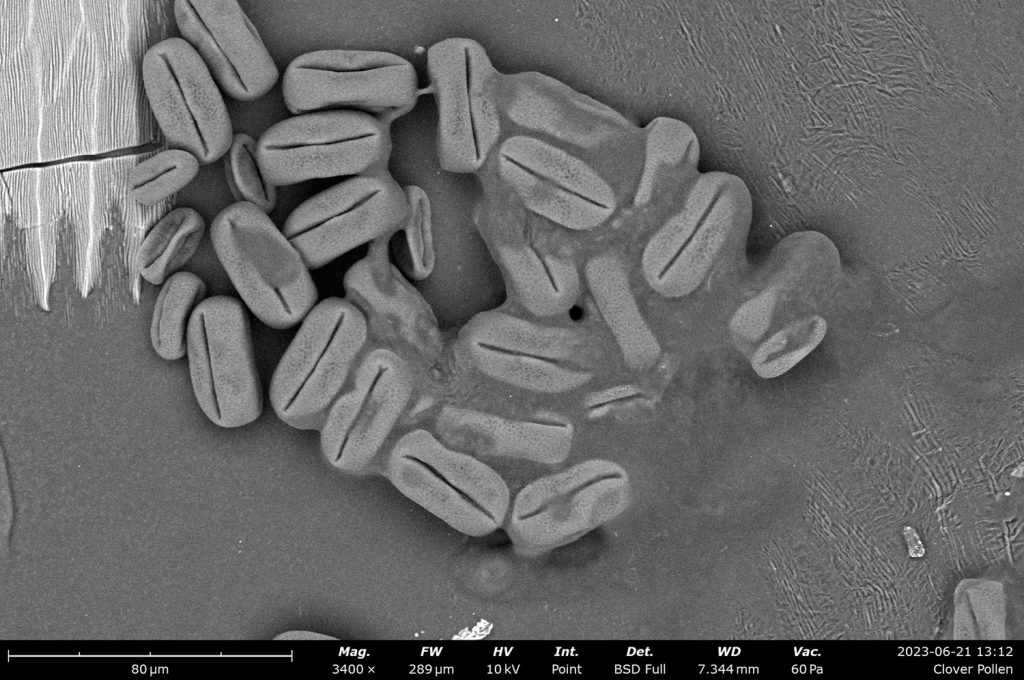
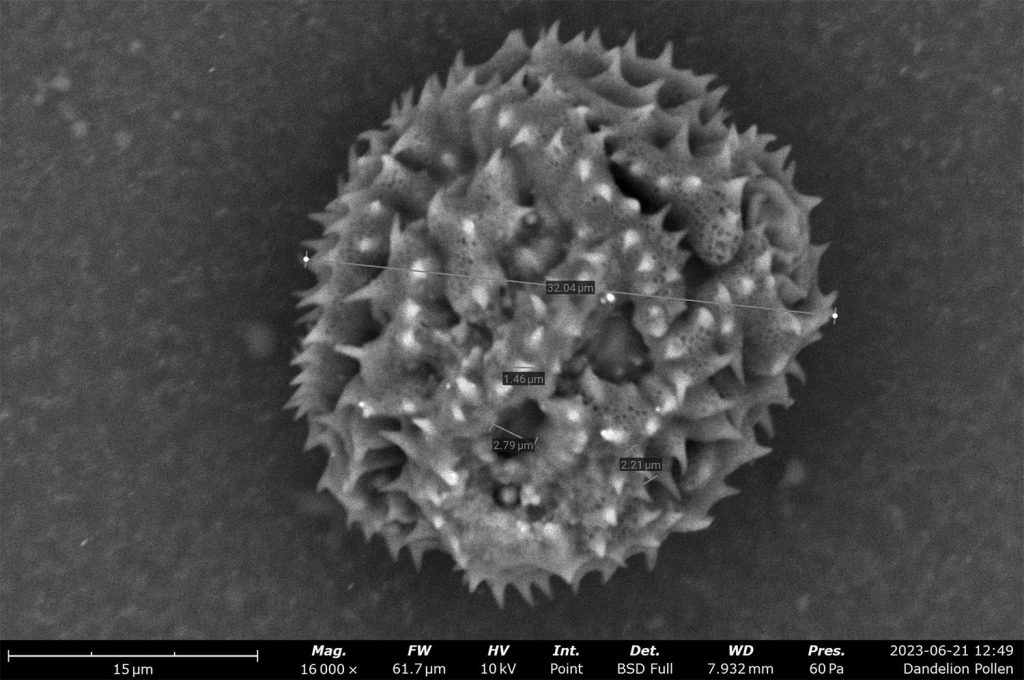
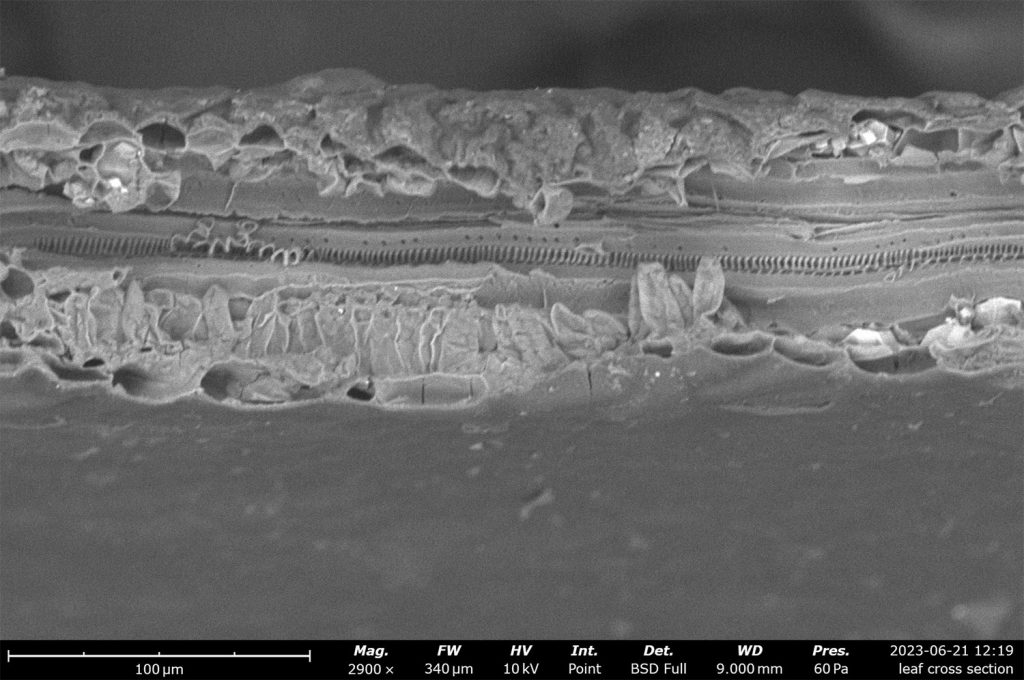
Conclusion
Buzz’s vision transformed into reality through the school’s new Phenom Desktop SEM, which will now encourage passion and nurture incisive minds year after year. For students and teachers alike, the experience of uncovering small and concealed features of both mundane and exotic materials inspires an eagerness to learn more. What students discover under the microscope will surely spark ideas and avenues to explore next, potentially shaping advancements yet to come. But most of all, it tethers their studies to the awe-inspiring world that exists beyond our human senses. A world only nanotechnology allows us to traverse.

